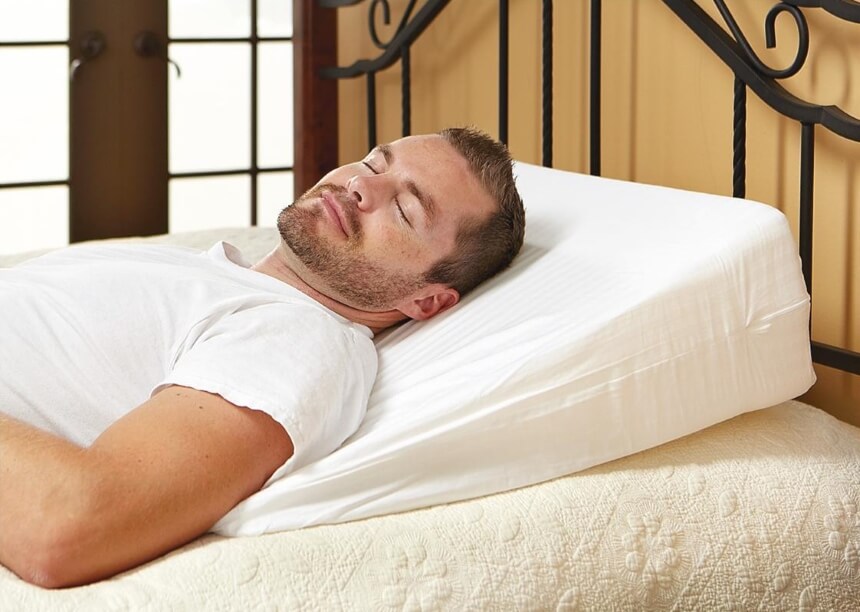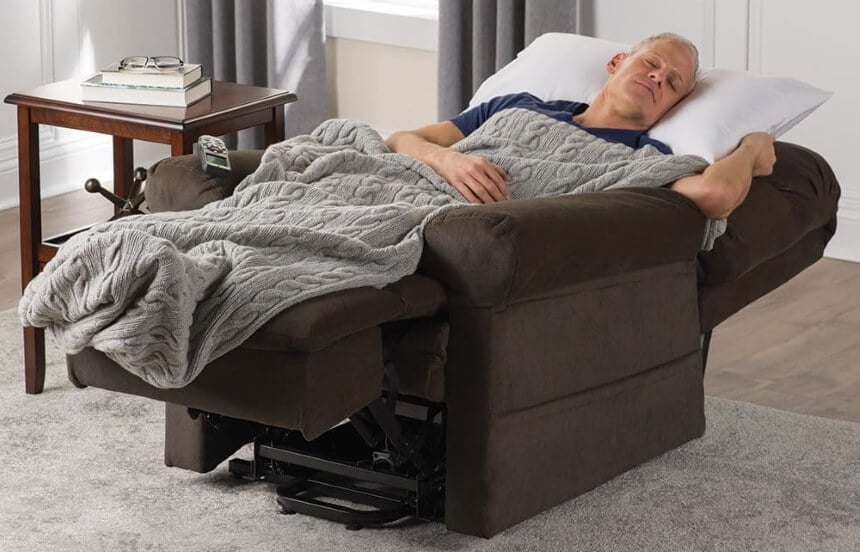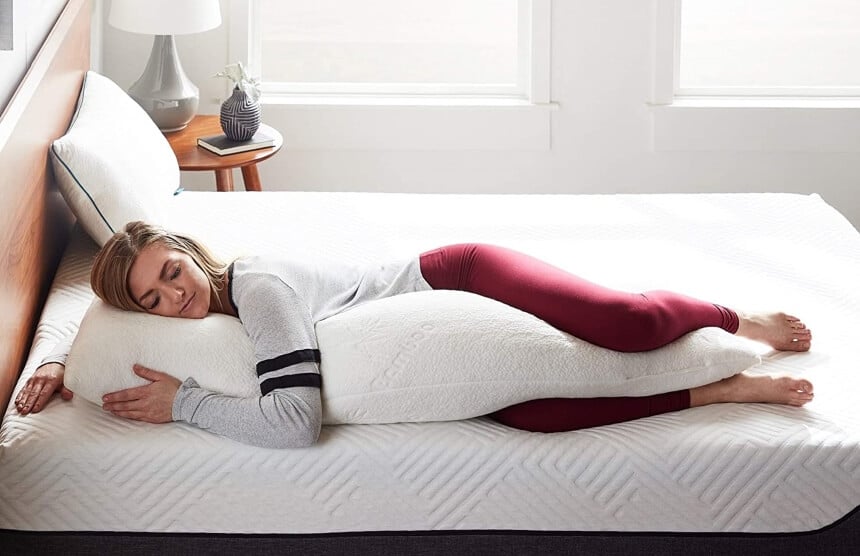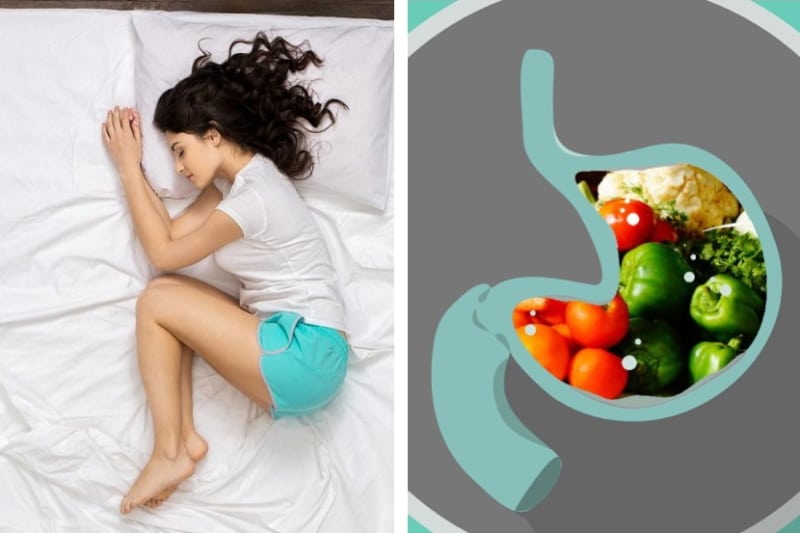

The rib cage is made of 12 pairs of ribs that protect vital organs such as the heart, lungs, liver, and spleen in addition to supporting the muscles that aid breathing. Trauma to this area causes sharp chest pain when you inhale or move and makes it difficult to sleep in your usual position. This is why it is important to find the best way to sleep with broken ribs without exerting pressure that could cause further damage.
Broken ribs are mainly caused by direct impact to the rib cage, but did you know that frequent repetitious actions like coughing severely, rowing, or swinging golf can injure the connective rib cartilage over time? A chest X-ray will check for fractured ribs and collapsed lungs while a CT scan will reveal any damaged muscles and tissues so your doctor can recommend appropriate treatment and advice you on the best way to sleep with broken ribs.
There are a number of factors that explain why you may feel more pain when sleeping with multiple broken ribs compared to when you are awake. First is the change of temperature. Chilly weather triggers muscle pain and coughs that hurt a fractured rib cage. Secondly, you are likely to move and stretch during the day and there are activities to keep your body busy and distract your mind. When you are sleeping and your body is at rest, it focuses on your injury and releases growth and restorative hormones that speed up healing. Thirdly, you have less control over movements in your sleep that could apply pressure on your fractured ribs. The other possible reason that applies in most cases is sleeping in the wrong position, leading to soreness and pressure on your injury.
Beauty sleep is not a myth. Our body repairs itself by increasing cell regeneration as we sleep. Bed rest is recommended for serious ailments because quality sleep is one of the effective ways you can have a quick recovery.
So, how do you sleep with multiple broken ribs when an injured rib cage affects the upper body, causing a sharp pain whenever you stretch or twist your torso to change sleeping positions? One of the best sleeping positions for broken ribs is on your back, with a pillow under each arm to restrict your movement so you don’t suddenly move to the side position. You can add a pillow under your knees to ease pressure off your back. To lie on your back without straining, bend and hold your knees, and then lift your feet slightly as you lower your head and shoulders to the bed slowly while sliding backwards. Sleep alone, if possible, to avoid a partner, child or pet pressing against your recovering rib cage.
If you’re not used to sleeping on your back, a specialist pillow might help a lot. Search for a contoured, cervical pillow, like this popular model from Coisum. Such pillows help align your sleeping position in the most correct way possible and, thanks to this comfortable feel, you’ll be able to fall asleep on your back in no time.
If the injury is on one side and it has not affected your back and neck, some physicians will advise you to sleep on that side to avoid moving the fractured ribs and use the unaffected side to take deep breaths. However, you should avoid sleeping on your side to avoid accidentally switching to the side with broken ribs.

If you have fractured ribs on both sides, then the usual sleeping positions may not be feasible without straining your ribs and spine. In this case, it is advisable to sleep while sitting upright with pillows supporting your neck and arms so your chest stays straight.


Your recovery period will be determined by the type of rib injury. If you are getting quality sleep for at least 8 hours daily and protecting your ribs from activities that might worsen the injury and prolong healing, the process should take 6 weeks to 2 months without surgery. Severe rib fractures needing surgery may take even a year to heal, especially if they result in damaged or infected organs.
Broken ribs may make it difficult to breathe comfortably and subsequently cause pneumonia or pneumothorax, a condition where the full or partial lung collapses due to trapped air caused by severely broken ribs. A great solution to prevent damaging the respiratory system is by taking slow and deep breaths alternated with gentle coughs after every few hours.
Unless your doctor advises otherwise, take the prescribed pain medication within an hour of going to bed to relieve pain while sleeping.
You may use an ice pack to soothe any bruising and reduce inflammation. Things you should avoid when you have multiple broken ribs are heating pads, medication that has not been approved by your doctor, and intense exercises like lifting weights and running.
When you are sleeping, your body’s restorative abilities are at maximum capacity because they are not overwhelmed by other body functions that take a lot of energy During deep sleep, your body increases blood circulation and releases prolactin and growth hormones that control inflammation and activate muscle repair by renewing cells. That’s why you need at least 8 hours sleep so your body can rest and recuperate.
National Health Service Trusted Source Food for healthy bones - NHS Nutrition advice to help build and maintain healthy bones throughout your life. www.nhs.uk (NHS) recommends taking calcium and vitamin D to reduce risk factors like osteoporosis which reduces bone density and makes you to prone to bone fractures. Drink plenty of water and eat fresh fruits and vegetables to help your body to create healing collagen. You can also reduce the risk of broken ribs by consuming protein which promotes bone mineral density, according to the National Institutes of Health Trusted Source Protein intake and bone health - PubMed Adequate nutrition plays an important role in the development and maintenance of bone structures resistant to usual mechanical stresses. pubmed.ncbi.nlm.nih.gov (NIH).






